When iOS 7 came out, it was a striking pivot from every version that came before it. Its redesign ended the era of realistic imitation and ushered in the stark, layered interface we’ve all become so familiar with. Love it or hate it, it made its mark.
It’s hard to believe that iOS 7 was released almost three years ago now, and although we know there are still people out there who are using it, we cannot continue to support it effectively. Later this month, when we release version 10.1, forScore will require iOS 8 or later.
There’s no perfect time to end support for older versions of an operating system, and we appreciate that there are valid reasons to not want to upgrade. Sadly, Apple’s latest developer tools (the ones required to support iOS 10) cannot compile and run code on devices using iOS 7 or earlier, so we’d be selling a product we can’t test. We won’t take that risk.
Fortunately, every device that can run iOS 7 can also run iOS 9 (and most will be capable of running iOS 10 as well), so we’re not ending support for any iPad hardware. Older versions of forScore will continue to run as is, of course, and Apple will even allow users who purchased forScore 10.0.4 or earlier to re-download and install that version on their iOS 7 devices at any time.
We’re excited to continue pushing forward, to take advantage of all the latest and greatest features, to benefit from critical security and stability improvements, and to support incredible new hardware on day one. Closing the chapter on iOS 7 lets us do exactly that.

This summer’s release of forScore 10 has been a tremendous success, and we’re extremely grateful for all of the acclaim and positive feedback we’ve received from both customers and the press. After months of hard work it’s incredibly rewarding to finally see the real-world impact of each new feature and improvement. You might even think we’d be headed out for a long vacation.
We’re a restless bunch, though, so of course we immediately jumped right in to begin crafting the first big update to forScore 10, version 10.1, and today we’re giving you a sneak peek at what’s to come. Although we don’t usually spend much time talking about “minor” point releases, make no mistake that 10.1 is going to really take things up a notch.
In fact, thanks to the major foundational improvements we made in forScore 10, we’re going to stick with it for a while and let these point releases serve a much bigger role. Focusing on them will give us more flexibility and let us release interesting features when they’re ready instead of artificially delaying them until the next major update.
So without further ado, you can read all about forScore 10.1 here.
Long-time user, frequent contributor, and honorary employee Alan Steinberger has shared a few music videos with us featuring him playing from his iPad with singer Matt Forbes. There are a few shots of forScore sprinkled throughout several of them, most prominently in a cover version of Rod Stewart’s “Some Guys Have All The Luck” as seen below:
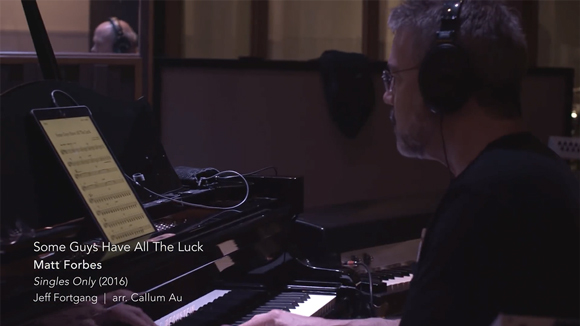
Learn more about Alan here, and check out all of Matt’s videos on his Facebook page.
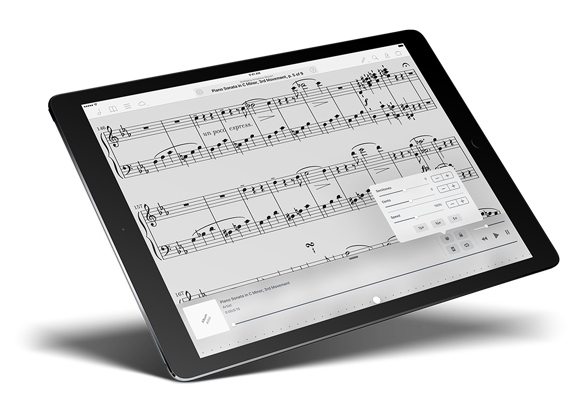
Today we’re very excited to announce the arrival of forScore 10 and forScore mini 3 on the App Store. These huge updates are absolutely free for all existing users, as always, and they include some incredible new features and enhancements that really take so many of forScore’s key functions to the next level. From brand new annotation tools and powerful audio track adjustments to setlist folders and the seriously upgraded Darkroom, they make everyday tasks easier, faster, and better.
Thanks to everyone who supported us and helped us get here, all the way up to version ten and beyond! We love working on forScore and appreciate the continued opportunity to bring you our latest ideas and improvements. And, of course, a very big thank you to our tremendous team of beta testers: they volunteer their time to try out our rough drafts, help us hone in on issues, and give us their feedback on all the changes we make. Thank you all.
Available now for iPad
Available now for iPhone and iPod Touch
Today we’re proud to announce the immediate availability of Beat Keeper 3.2, a free update to our standalone metronome app. This update adds plus and minus buttons for making precise BPM adjustments (which will also be coming to forScore 10 later this summer). Beat Keeper is now also a universal app, so it’ll run on your iPad as well as your iPhone and iPod Touch. It supports Slide Over and Split View too, allowing you to use it while you work with other apps.
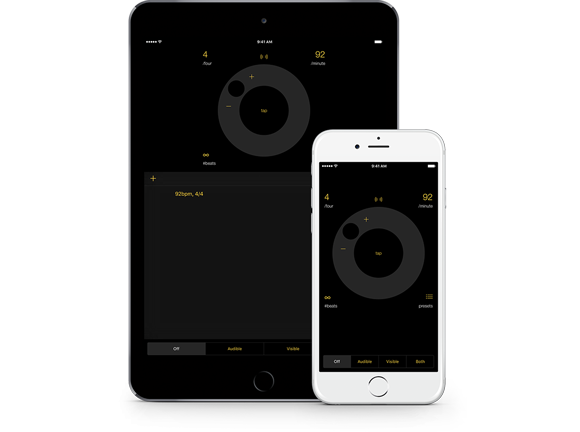
With today’s update, all of the apps in our Music Box are now universal. That means our utilities can be nearby no matter which device you’re using, and we think it’ll be a great introduction to the forScore family for iPad users who haven’t yet taken the plunge. Get Beat Keeper 3.2 today, free for existing users and $0.99 (USD) on its own, or get the whole Music Box for $3.99 (pro-rated if you’ve bought any of its apps already).
Available now for iPhone, iPad, and iPod Touch on the App Store.
Get our four utility apps or complete your collection with this app bundle.
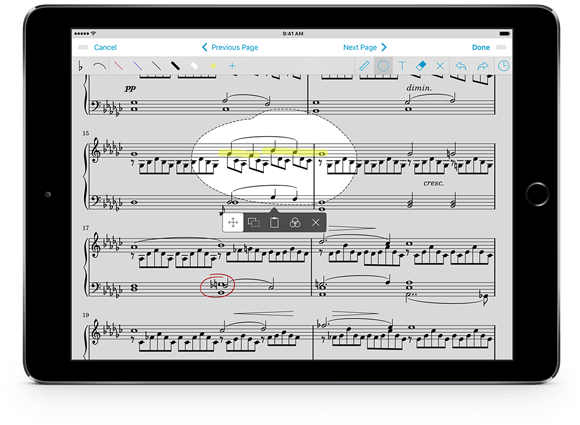
After many months of hard work, today we’re very excited to give you a first look at our next major update, forScore 10. In lieu of our typical series of smaller sneak peeks, we’ve put together a huge preview page that gives you a great look at much of what’s coming later this summer.
It’s hard to believe we’re here putting the final touches on the tenth major version of forScore, and we couldn’t have done it without the tremendous support of our customers. As always, thank you.
This Sunday’s print edition of the New York Times will feature an article discussing the shift from paper to digital sheet music, but a version of the article is already available online. We were interviewed for the article, and while none of our comments made it into the final piece, it’s a great look at the transition and especially the impact it can have on annotation.
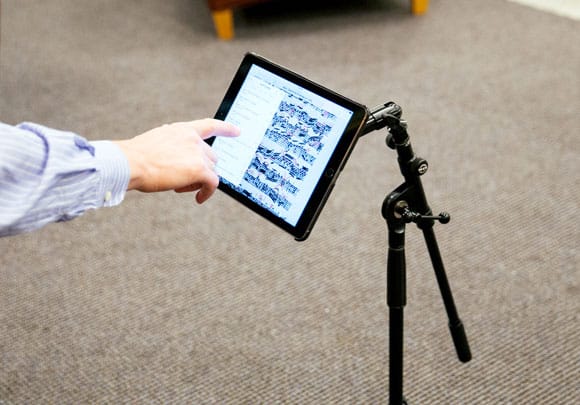
 Today we released forScore 9.4 and forScore mini 2.4, kicking off the start of what’s sure to be a busy summer for us. We’re working hard on a big new update and, with Apple presumably set to announce and start publicly testing iOS 10 next month at their annual developer’s conference, there’s a lot to get excited about.
Today we released forScore 9.4 and forScore mini 2.4, kicking off the start of what’s sure to be a busy summer for us. We’re working hard on a big new update and, with Apple presumably set to announce and start publicly testing iOS 10 next month at their annual developer’s conference, there’s a lot to get excited about.
Of course, it takes a lot of work to refine a beta version and turn it into something that’s ready for release. Often the only way to find and fix bugs and usability issues is to get it into the hands of as many people as possible. That’s why we use TestFlight—Apple’s beta testing service—to work through those problems. Beta testing is more than just getting a sneak peek at new features and updates, it requires attentive and communicative users who are passionate about helping to make forScore the best app it can be. If you’re up to the challenge, consider becoming a beta tester. Our beta testers provide invaluable feedback and their participation is sincerely appreciated.
Today we’re proud to announce the immediate availability of forScore 9.4 and forScore mini 2.4. These updates includes some new enhancements designed to improve usability in two key areas:
First, we’ve added a new section in forScore’s settings panel called “annotation tools” that gives you more control over how annotation mode saves your last-used tool or preset. 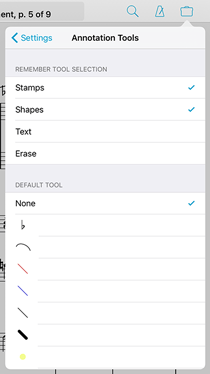 Choose which tools can be saved between annotation sessions and which should not, or specify one particular drawing preset that will always be active every time you begin annotating. The new settings are available for all devices, but should be especially helpful for users with Apple Pencil and forScore’s live annotations enabled.
Choose which tools can be saved between annotation sessions and which should not, or specify one particular drawing preset that will always be active every time you begin annotating. The new settings are available for all devices, but should be especially helpful for users with Apple Pencil and forScore’s live annotations enabled.
We’ve also made it easier to download scores from a cloud service directly to a setlist. Either tap and hold an item or use the “Edit” button to select multiple items and then tap and hold the download button in the toolbar. Or, if you’re using iOS 8 or higher, you can also swipe left over an item and select the new “Download…” option. Once you do, you can choose to download the item(s) to your library like you normally would, download them to the current setlist (if you’re playing or viewing one), or download them to any setlist in your library.
These specific enhancements really boost productivity in key areas, and we think they’ll make a big difference. Thanks as always to our customers—and especially our beta testers—for helping us continue to make forScore the best app it can be. These updates are free for all existing users and still just $9.99 and $6.99 (USD) for newcomers, so be sure to check them out today!
Over the past six years, we’ve seen several different companies bring page turners to the market and continue to innovate with firmware updates and new models. From the original versions to their modern counterparts, each company has tried to balance portability, reliability, power, and software connectivity in a variety of different ways. The latest entrant is IKMultimedia’s iRig BlueTurn, and it’s a solid device that strikes a good balance between each of the tradeoffs found with its competitors.
The BlueTurn looks a lot like half of IKMultimedia’s iRig BlueBoard, featuring two of the same rubberized backlit pads that are completely silent and have a different feel than the more traditional pedals of most other devices. Unlike the BlueBoard, which was designed more for MIDI functions and features its own companion app, the BlueTurn is more like the other keyboard-based page turners on the market. It sends standard up/down, left/right, or page up/page down keys—all of which work with forScore without any additional configuration.
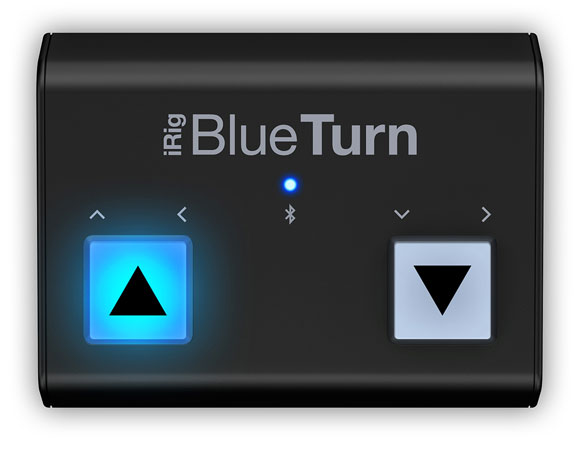
It uses the Bluetooth Smart standard (a.k.a Bluetooth LE, Bluetooth 4.1), making it incredibly power efficient. It runs off of two AAA batteries that can be quickly replaced in a pinch, unlike other page turners that rely on built-in, slowly rechargeable batteries. You’ll need a Bluetooth Smart-capable device to use the BlueTurn, and every iPad except the iPad 1 and 2 will work.
There are other Bluetooth Smart devices out there that are compatible with forScore, including the larger BlueBoard, but their connection must be micromanaged from within forScore’s Devices panel. The AirTurn PED requires its own SDK and uses its own interface to manage the connection, and when things go wrong these extra steps can be a pain. The BlueTurn, on the other hand, connects like most older page turners—through the Settings app. Setup is straightforward and reliable, and once it’s done you shouldn’t have to think about it ever again.
The biggest downside to the BlueTurn is that iOS disables the virtual, on-screen keyboard when it’s connected (just like Airturn’s BT- series, PageFlip’s Cicada and Firefly, and the Footime page turner do). You can toggle the keyboard by pressing and holding the left pad for three seconds, but this extra step is definitely something avid users of forScore’s text annotations and search features should be aware of.
Beyond that, the BlueTurn works just like you’d expect. Press the right button to turn the page forwards, and the left button to turn backwards. And at $69 (USD), it’s a good option for musicians who don’t need extra pedals and don’t rely heavily on typing.
Pros:
• Bluetooth Smart technology provides great battery life
• Batteries can be replaced quickly
• Backlit pads are easy to see in dim environments
• Connects on a system level via the Settings app
• Works out of the box, no need to adjust “modes”
Cons:
• Requires additional steps to use the on-screen virtual keyboard
• Incompatible with iPad 1 and 2
• No auxiliary ports for additional pedals











